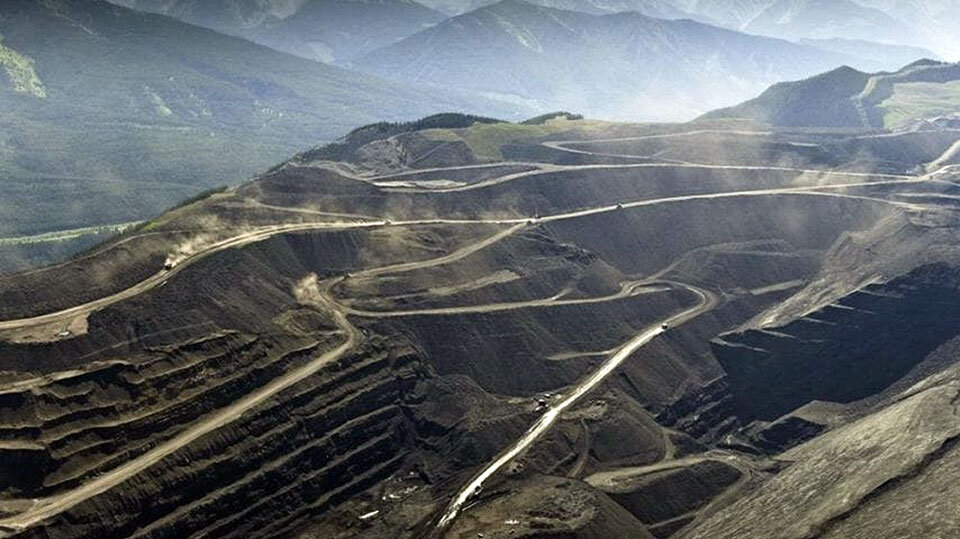Lessons from the Elk River: What Open Pit Mining Could Mean for Alberta's Fisheries
By: Dean Taylor
Mixed in with the stream of endless COVID coverage, Alberta’s latest amendment to their coal policy is yet another would-have-been controversial government decision that has managed to stay out of the spotlight due to our ever-saturated news cycle. Although it has spent very little time in the headlines, the approval of a foreignly funded open-pit mine near one of Alberta’s most important watersheds could become a disastrous short term solution to a very long term problem.
Alberta’s New Policy
In June of 2020, in light of the COVID pandemic’s continued threat to the province’s economy, Alberta’s conservative party, rather discretely, rolled back 1976’s restrictions on open-pit mining in an effort to create new jobs and nurse the province’s economy back to health. In doing this, Alberta opened up roughly 421,800 hectares of category 2 and 3 lands over to coal leases, areas that were previously heavily regulated and protected from underground exploration and development.
Source: Canadian Parks and Wilderness Society
The largest and most prominent of these coal leases are owned by four Australian coal mining companies, most notably Atrum and Montem, with plans to turn nearly 800 square kilometres of Alberta’s Rocky Mountains into open pit/mountain top removal coal mines to provide steel making material to Asian and Brazilian markets. These plans will include multiple mines stretching from Crowsnest Pass right into the Oldman River Watershed, an area that is home to countless ranchers and first nations, supports a stable population of the threatened Westslope Cutthroat Trout, and provides habitat to a myriad of local wildlife, including Grizzly Bear.
The Problems with Open Pit Mining
Deforestation:
Before the mine is even functioning, massive amounts of deforestation and land reallocation is needed to provide space for, and access to, the mining site. This includes space for roads, rail lines, pipelines, and housing for workers. These roads would be set to run directly through areas that are currently providing habitat for Grizzly Bear, Big Horn Sheep, and Mountain Goats, as well as massive amounts of grazing land used by local ranchers. In fact, the leasing company has already announced plans for removing vegetation, creeks, and streams until the project has been complete. While the Australian companies have stated their intentions to restore the area after the coal has been extracted, the impossibility of this task is very apparent and Alberta’s history with reclaiming mining sites would suggest that any hope for adequate reclamation is extremely far-fetched.
Selenium:
Once the mine is operational, the greatest threat comes from a chemical known as selenium. Selenium is one of the primary unintentional exports of open-pit mines, often turning up in adjacent rivers and underground water supplies after leaching out of the project’s waste rocks. Although the element is harmless, and even essential, in small doses, large amounts of it can prove fatal for fish and cause serious health concerns for humans who consume fish or water from the area. Since the element is very difficult to detect, signs of contamination are often found much too late when deformities and die-offs in local fish populations have already taken hold. The risk of this occurring in the Oldman Watershed is especially careless, as the river is home to one of the few stable populations of the threatened Westslope Cutthroat Trout, as well as other historically threatened species such as Bull Trout. While the cost to fish is bad on its own, the fish are often just the first sign of things to come and act as a signal that the selenium in the water has approached levels that have the potential to impact human consumers. This is especially concerning in this watershed as it provides drinking water to nearly 1.8 million Albertans and flows into the water supplies of towns all over Alberta, Saskatchewan, and Manitoba.
Warnings from Elk River, BC
The concern over open-pit mining in Alberta is far from unfounded and you do not have to look far for an example of how easily and how severely things can go wrong with this kind of mining project.
Elk River, British Columbia has had a long history of mining, however, it was not until roughly 40 years ago that large scale open-pit/mountain top removal mines began to dominate the area. In 2018, after countless complaints from fishing guides and biologists who were noticing deformities in fish populations as far south as Montana, the impact of these mines was finally looked into. As expected, selenium was the primary culprit, being measured at levels nearly seven times higher below the mine than above. Studies also found that the Westslope Cutthroat populations, the same found in the Oldman Watershed, were reduced by nearly 93% in the adjacent Fording River within one year of significant selenium detection. In addition to the dying fish populations, hundreds of public and community water supplies have also been contaminated, from BC to Montana, earning the owners of the mine (Teck Industries) a $1.4 million fine and an ongoing international transboundary dispute.
Exposed gills on a Cutthroat Trout as a result of Selenium Poisoning. Source: Paul Samycia via Yale Environment 360
“Amendments” to the Plan
Since writing this article, the Alberta government has responded to criticism by making amendments to their original plan that was laid out this past June. While the headlines may have you believe that the battle has been won, the map below shows a much clearer picture as to what is still going on.
As seen above, the small sections in purple are the areas that have been amended and regained the protection given to them in 1976. As you can also see, there are still massive amounts of land that do not regain their protections, 420,000 hectares to be exact, and are still in the process of being developed by foreign coal mining companies. While the 1,800 hectares that have regained their protections should still be viewed as a victory, it is a very small one that has far from solved the danger these proposed mines have the potential to pose.
Further Action
For more information on Alberta’s policy changes and for ways you can get involved, check out https://www.savethemountains.ca/ or visit #savethemountains on gofundme. You can also help by sharing this article, and others like it, to help put this issue in front of more people and get it the attention it deserves.



